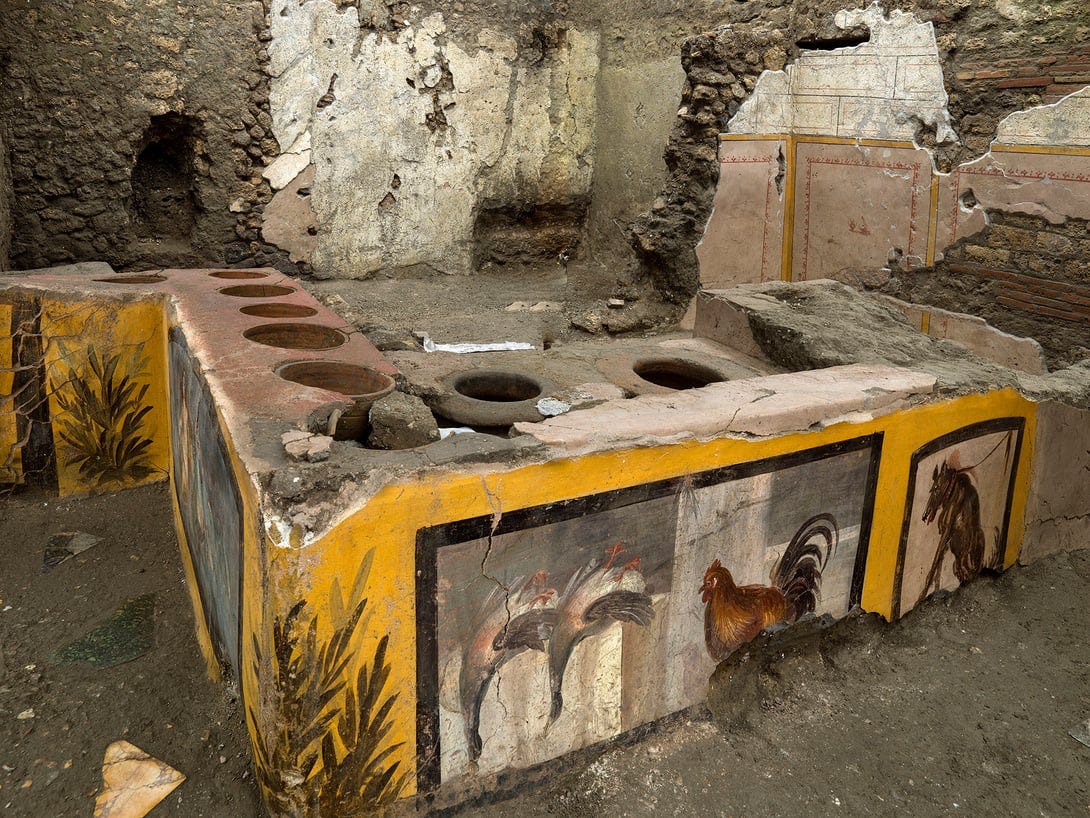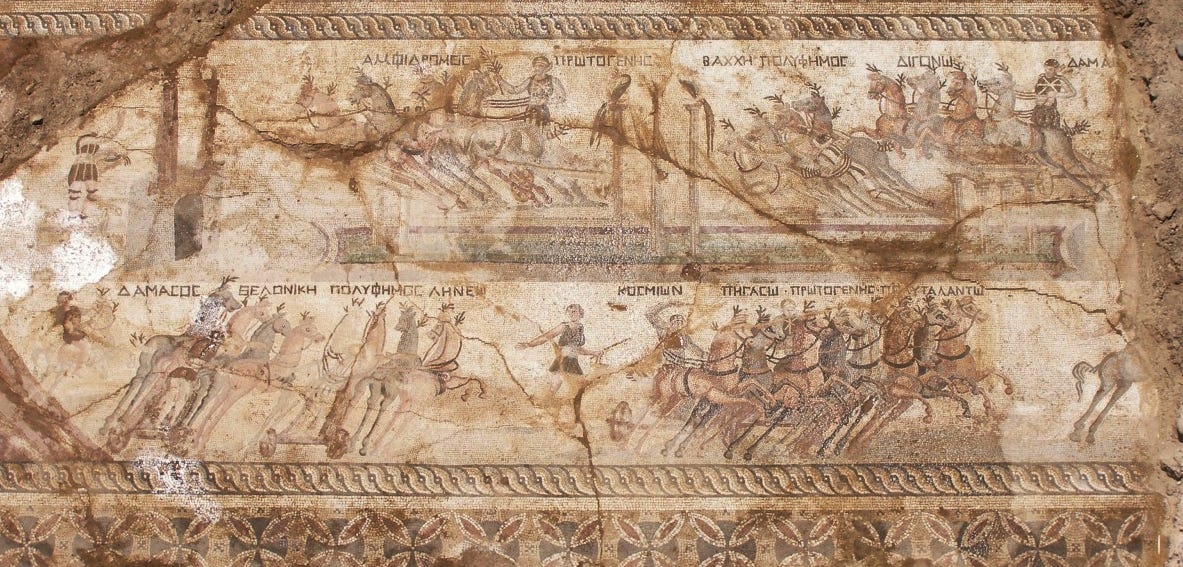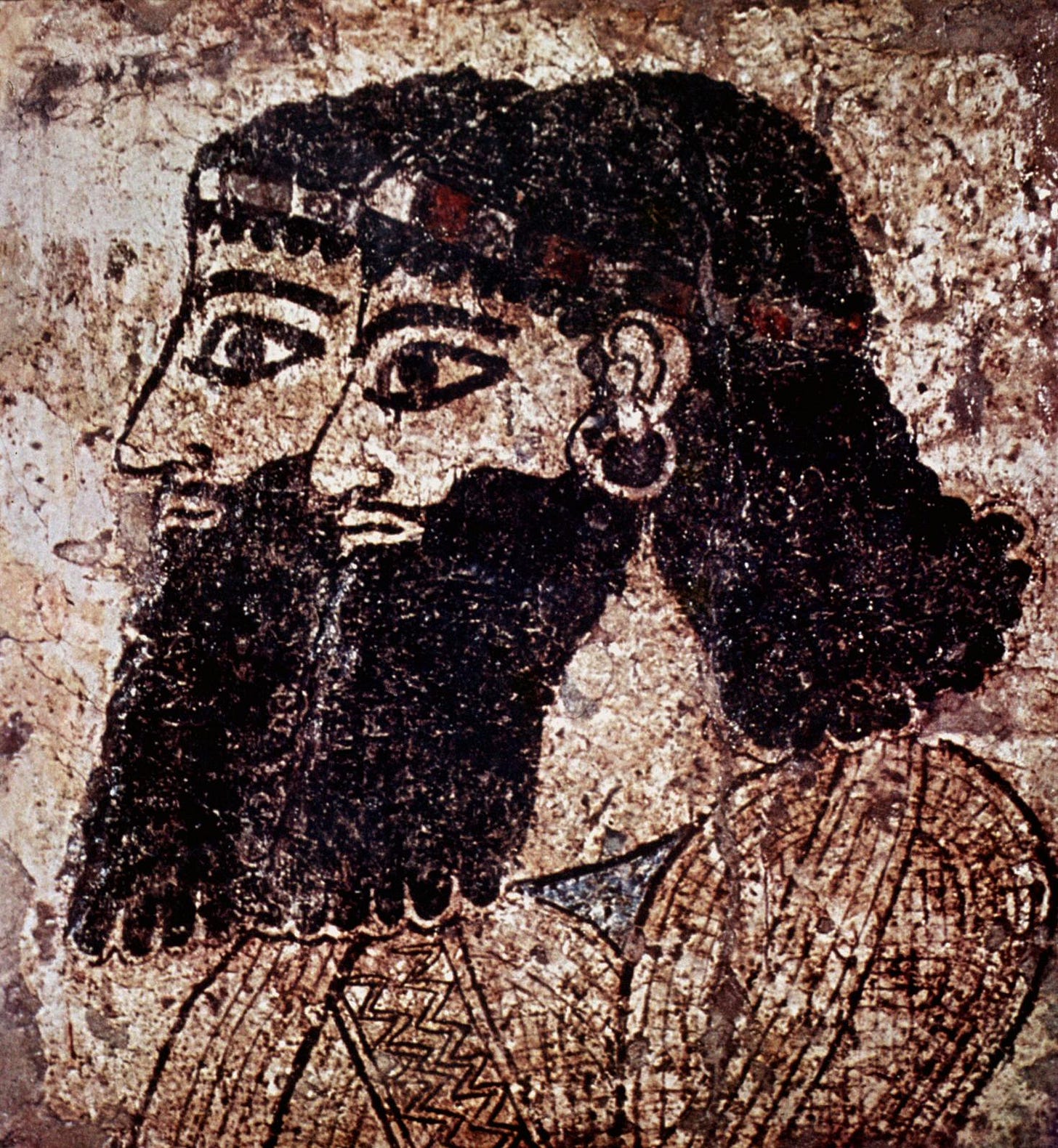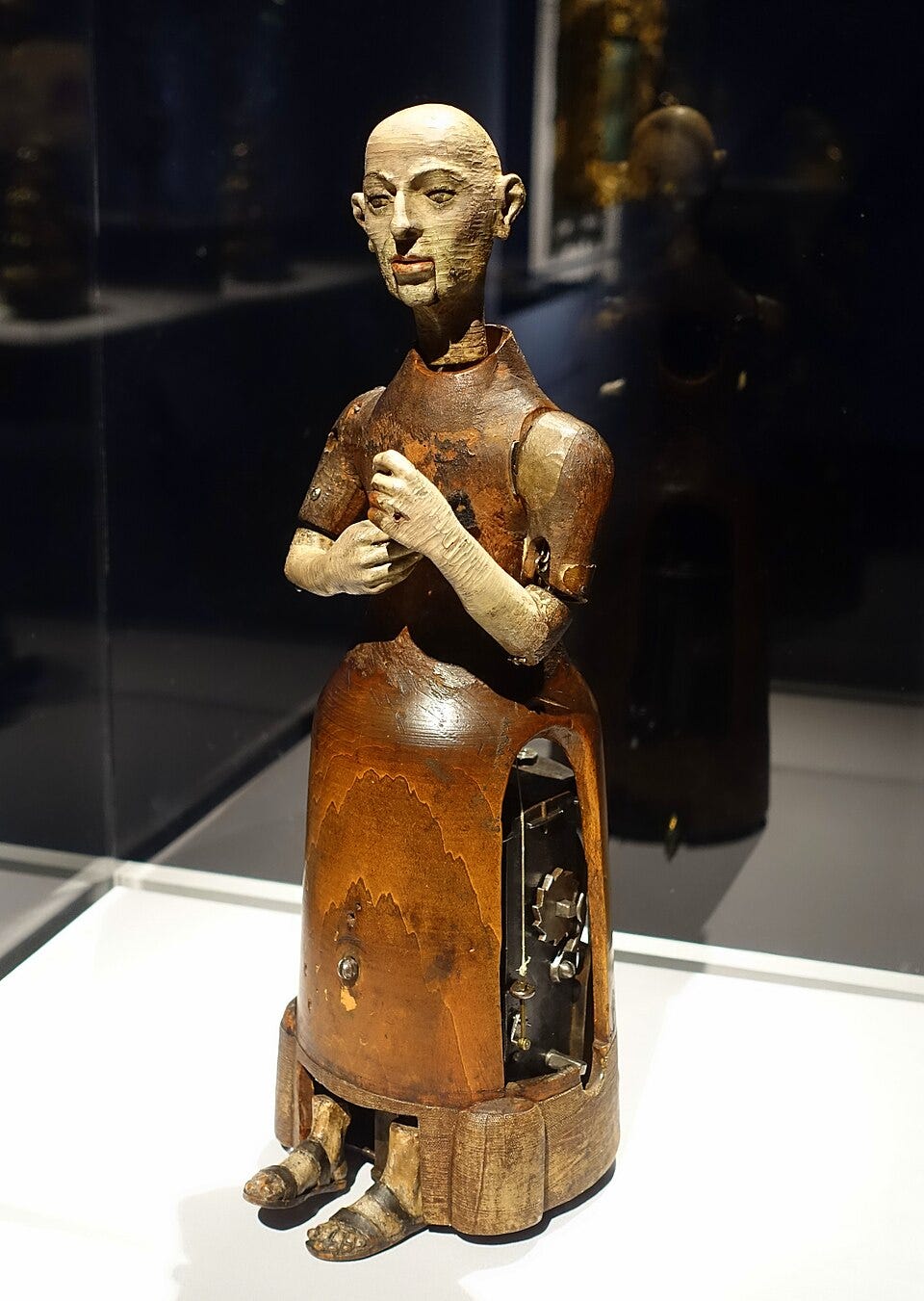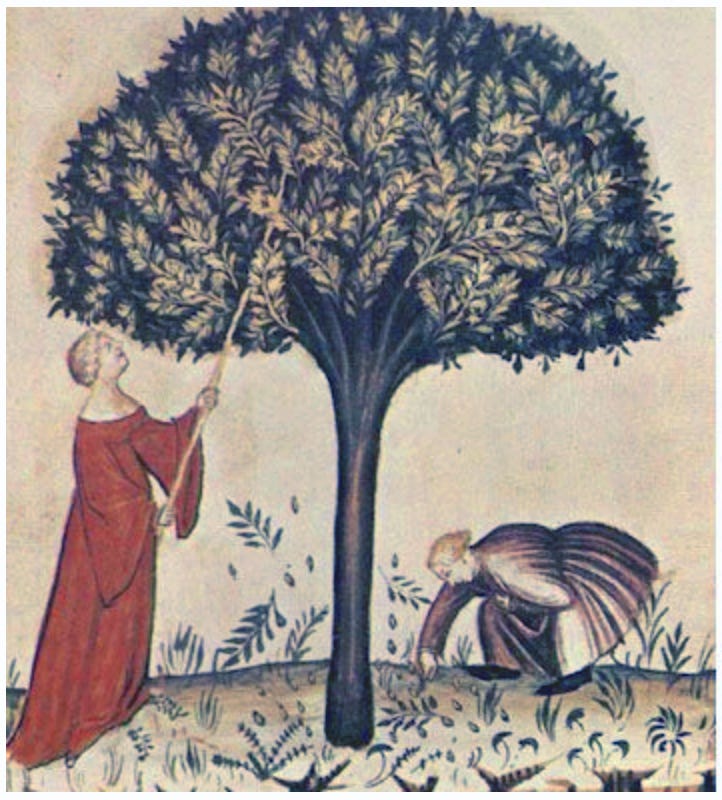Ancient consumerism: Shoddy Goods 058
Five habits that seem modern, but aren't
Regular readers of Shoddy Goods, the newsletter from Meh about consumer culture, know that we've got a weakness for nostalgia about the recent past. So this week we're doing something totally different: nostalgia for the distant past. I'm Jason Toon, inviting you to return with me now to those thrilling days of yestermillennium…
We all know about those "traditions" that were actually made up by some Madison Avenue copywriter in 1957. But what about the other way around? What about those lifestyle tics that seem emblematic of our phony, disposable, decadent, time-crunched age… until you realize people were doing them centuries or millennia ago?
Maybe "the past is a foreign country," as in the famous L.P. Hartley quote. "They do things differently there." But look into daily life and it seems they did a lot of things the same, too - even things we think of as uniquely modern.
Wolfing down fast food on the go
Still in better shape than the food court at the abandoned mall near you
"People don't take time to sit down to a nice meal anymore." It's an article of faith among today-haters. Certainly, in the old days, nobody would have degraded themselves by grabbing a warmed-over handful of calories and inhaling it en route to their next destination.
Well, is ancient Rome "old days" enough for you? Because thermopolia like this one unearthed at Pompeii prove that there's nothing new about fast food. Vats of fish, pork, and "a concoction involving snails, fish, and sheep" were kept warm for the convenience of passersby. Almost everybody got their order to go because most thermopolia didn't have anywhere to sit. And like today, the upper crust looked down on these fast-food joints, periodically cracking down on them as the haunts of criminals and ne'er-do-wells.
"In many parts of the western world today, a popular belief exists that family members should sit down and dine together and, if they don't, this may represent a breakdown of the family structure, but that idea did not originate in ancient Rome." So said Dr Penelope Allison of the University of Leicester in a 2007 article about thermopolia. So the next time you're scarfing down a lukewarm taquito outside a 7-11, you're not just being a pathetic slob, you're carrying on the glory that was Rome. (And by "you", I mean me.)
Wearing your sports fandom on your sleeve
How fans followed sports before ESPN
It's true that within my lifetime, the percentage of branded sports-team apparel in the average American man's wardrobe has gone from somewhere near 0% to somewhere near 100%. Look at old photos of ballgame crowds and you'll see nary a Starter jacker or replica jersey.
But if you could look back even further - say, to the chariot races in 6th-century Constantinople - you'd see fans bedecked in the blue and green of the biggest rival teams, the Blues and the Greens. Tantalizingly, there are references to rival fans having distinctive haircuts, too, but sadly no images survive.
The Blue-Green rivalry eventually outgrew the racetrack and became a major cleft in Byzantine society, with corresponding political jockeying (pun intended) and constant street brawling. The fighting got so fierce that, in one incident, Green fans slaughtered 3,000 Blue fans in the Constantinople Hippodrome. When the Emperor Justinian finally tried to crack down on the rival factions in the year 532, they joined together and almost ousted him before being killed en masse by imperial troops. After that, a lot of fans put away their gameday wear and found less dangerous hobbies.
Men wearing makeup
Hail King Tilgath-pileser, Lord of the Smoky Eye!
The 21st century has seen a lot more men taking care of their grooming than in the last few decades of the 20th. But even guys who spend freely on manicures and moisturizer recoil a little at the slow but steady rise of cosmetics for men. I'll admit it, I've looked on intrigued at women using concealer to hide the bags under their eyes while never quite working up the resolve to use it on mine. It just seems like a step too far, somehow.
Truth is, dudes have been using makeup for a long, long time. I don't just mean, like, powdered aristocrats in the degenerate late Hapsburg dynasty. I'm talking all the way back to the dawn of civilization. Everyone in ancient Mesopotamia and Egypt, men included, routinely wore kohl eyeliner. This ground-up lead sulfide powder not only made the eyes look bigger, it was also believed to protect against the sun (likely) and evil-eye curses (less likely). Other uses, like green eye shadow and red lip color, also came in and out of fashion for men, but kohl remained popular for many centuries. When you see those big heavily-outlined eyes in ancient Middle Eastern art, it's probably not just the artist's imagination.
Creepy animatronic figures
I'm sorry I'm sorry whatever I did I'm sorry
"A number of people find Mr. Lincoln frightening," reported the Houston Post in 1968 about the animatronic presidents at Disneyland. "A few people have expressed revulsion." The animatronic band at Showbiz Pizza was nightmarish enough to inspire a smash hit horror video game franchise. But medieval Europe's favorite form of showbiz, Christianity, did it first - and creepier.
"Robot saints" drew crowds to churches to marvel at the mechanical icons who used water-powered, steam-powered, or wind-up mechanisms to move their eyes, mouths, limbs, and heads. Pre-modern Europeans were no dummies - they knew how watches and water pumps worked - but the movement could be so lifelike and precise that church authorities worried people would mistake them for miracles. The "automaton friar" shown here dates from the mid-1500s. If you think it's disturbing in the photo, watch it in action and you might never sleep again.
Almond milk
Lo! Ther is melk in hem thare treen!
No, nut milk was not invented by Starbucks to annoy your crabbiest uncle. Almond milk is an ingredient in medieval cookbooks from Iceland to Iran, including the oldest known cookbook in the English language, The Forme of Cury, compiled around 1390. It was used in both sweet and savoury recipes, sometimes interchangeably with cow's milk, sometimes as an egg substitute. After arriving from the Middle East, almond milk became so widely used in medieval Europe, the food history site Seconds calls it an "obsession".
Unlike today, almond milk's popularity wasn't driven by veganism or weight-loss concerns. Cow's milk was prone to spoilage, only available at certain times of year (before industrial milk production), and prohibited in certain periods on the Christian calendar, particularly Lent. Almond milk to the rescue! Its high price probably made it a rare delicacy for the general population, especially since it was often sweetened, which made it even more expensive. In any case, the only thing uniquely modern about almond milk is the attitude that it's "not real milk."
What ‘recent’ traditions and gripes do you wonder about the history of? Did parents complain their kids were spending too much time on their tablets back when they were made of stone? Did people have to shush chatty theater-goers at ancient Greek plays? Join us in this week’s Shoddy Goods chat as we track down the history of ‘recent’ trends and complaints.
—Dave (and the rest of Meh)
Wow, these past Shoddy Goods stories still feel so contemporary despite coming out weeks or months ago:


